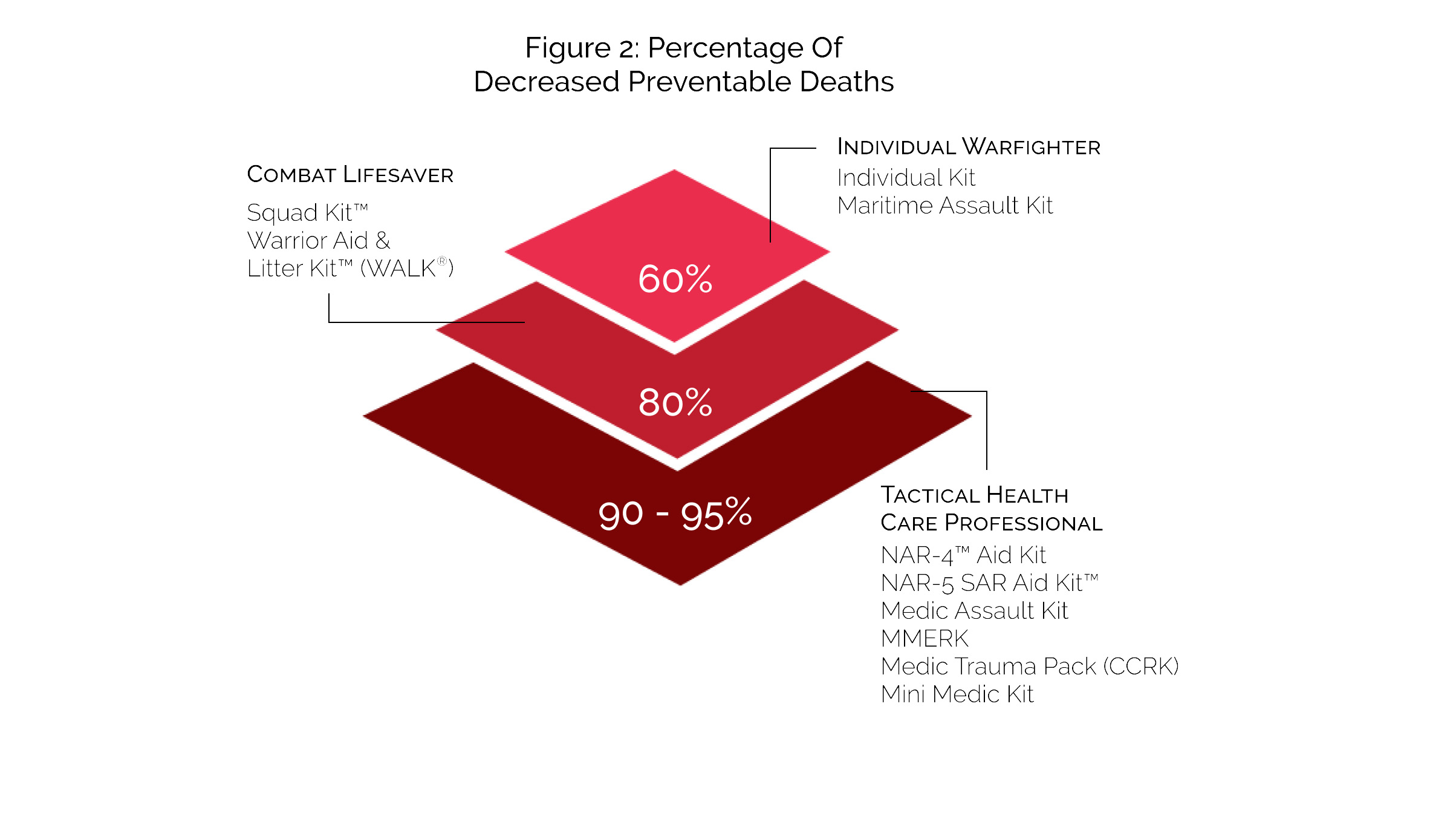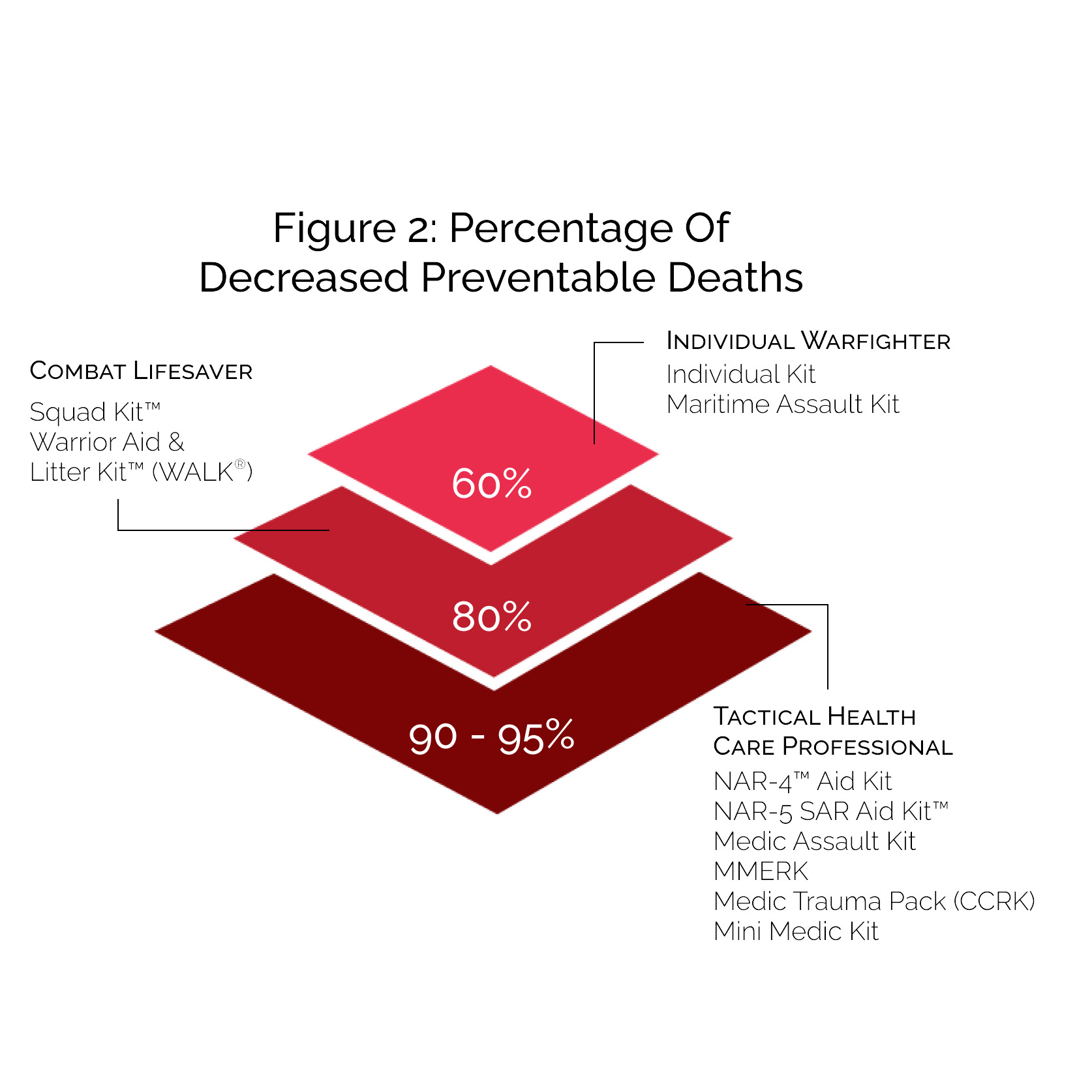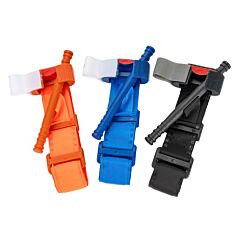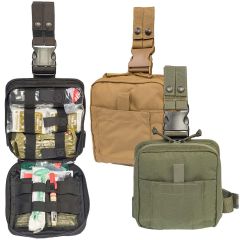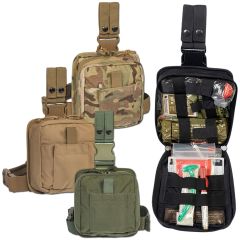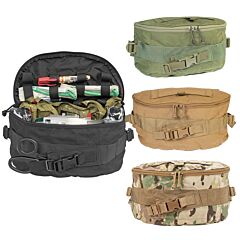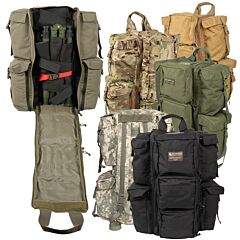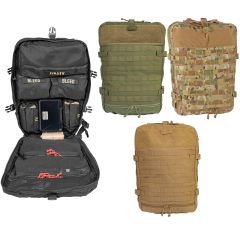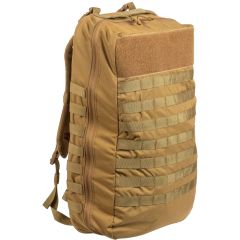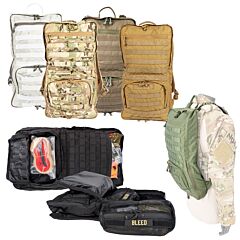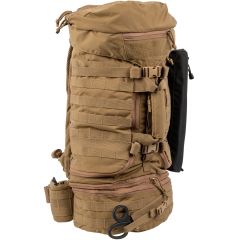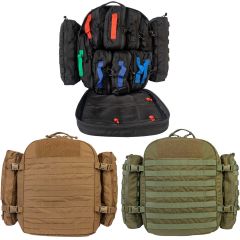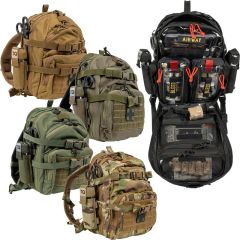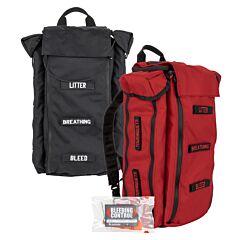

The only standard of care dually endorsed by both the American College of Surgeons,
and the National Association of EMT's for Casualty Management in Tactical Environments
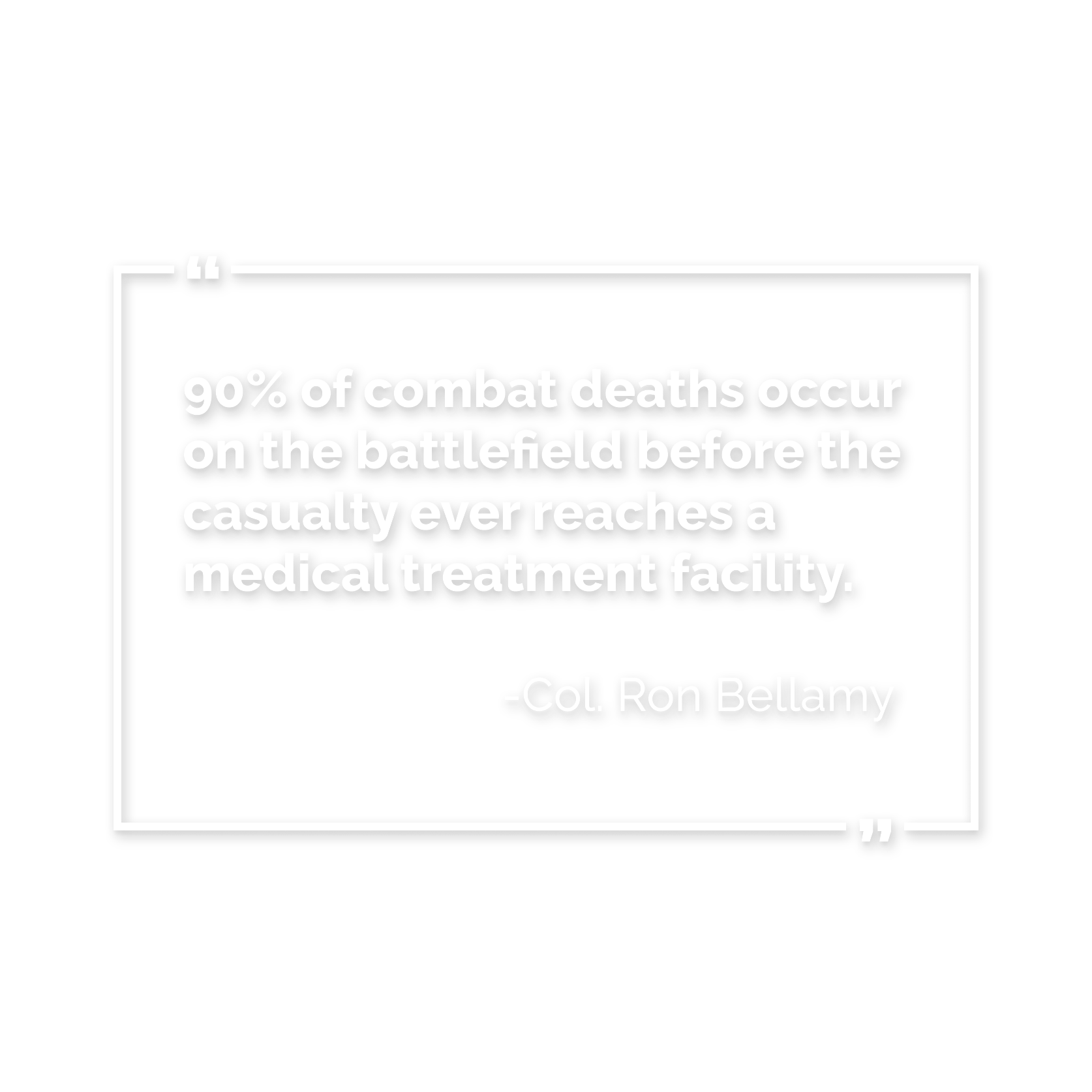

THE EVOLUTION OF
TACTICAL COMBAT CASUALTY CARE
The hard lessons learned over centuries of battlefield healthcare were largely ignored until a landmark paper appeared in a 1996 issue of Military Medicine.
Previously, military guidelines for trauma management mirrored tactics used in the civilian sector. Initiated by the elements of the Special Operations Command, the new strategies outlined in 1996 were collectively referred to as Tactical Combat Casualty Care (TCCC).
DECREASE PREVENTABLE COMBAT DEATH
TCCC was formed from the Joint Trauma System's Committee on Tactical Combat Casualty Care. TCCC launched a total reassessment of practices with one overarching goal: Decrease Preventable Combat Death at the point of wounding. These new strategies based on historical wounding patterns in combat also bear a particular relevance to the operators of Tactical Law Enforcement who share many operational parallels with their military counterparts.
Instead of the civilian-based approaches of the past, integrated strategies specific to combat realities continue to emerge. Compared to standard pre-hospital treatment modalities, which are fundamentally based on blunt trauma, TCCC distinguishes itself from the norm by focusing primarily on the intrinsic tactical variables of blunt, blast and penetrating trauma compounded by austere environments.
Today, TCCC has become the standard of care for the tactical management of combat casualties within the Department of Defense and is the sole standard of care dually endorsed by both the American College of Surgeons and the National Association of EMT's for casualty management in tactical environments. The committee continually reviews their protocols to stay up-to-date in order to provide the best recommendations for training and equipment. Click here to view the latest TCCC protocols.
TCCC IS BUILT AROUND THREE
DEFINITIVE PHASES OF CASUALTY CARE:
Care Under Fire
Care rendered at the scene of the injury while both the medic and the casualty are under hostile fire. Available medical equipment is limited to that carried by each operator or medic, and is focused on immediate life saving interventions (like TQ placement) only.
Tactical Field Care
Rendered once the casualty is no longer under effective hostile fire. Medical equipment is still limited to that carried into the field by mission personnel. Time prior to evacuation may range from a few minutes to many hours.
Tactical Evacuation Care (TACEVAC):
Rendered while the casualty is evacuated to a higher echelon of care. Any additional personnel and medical equipment pre-staged in these assets will be available during this phase.
THE TARGET: INCREASED SURVIVABILITY
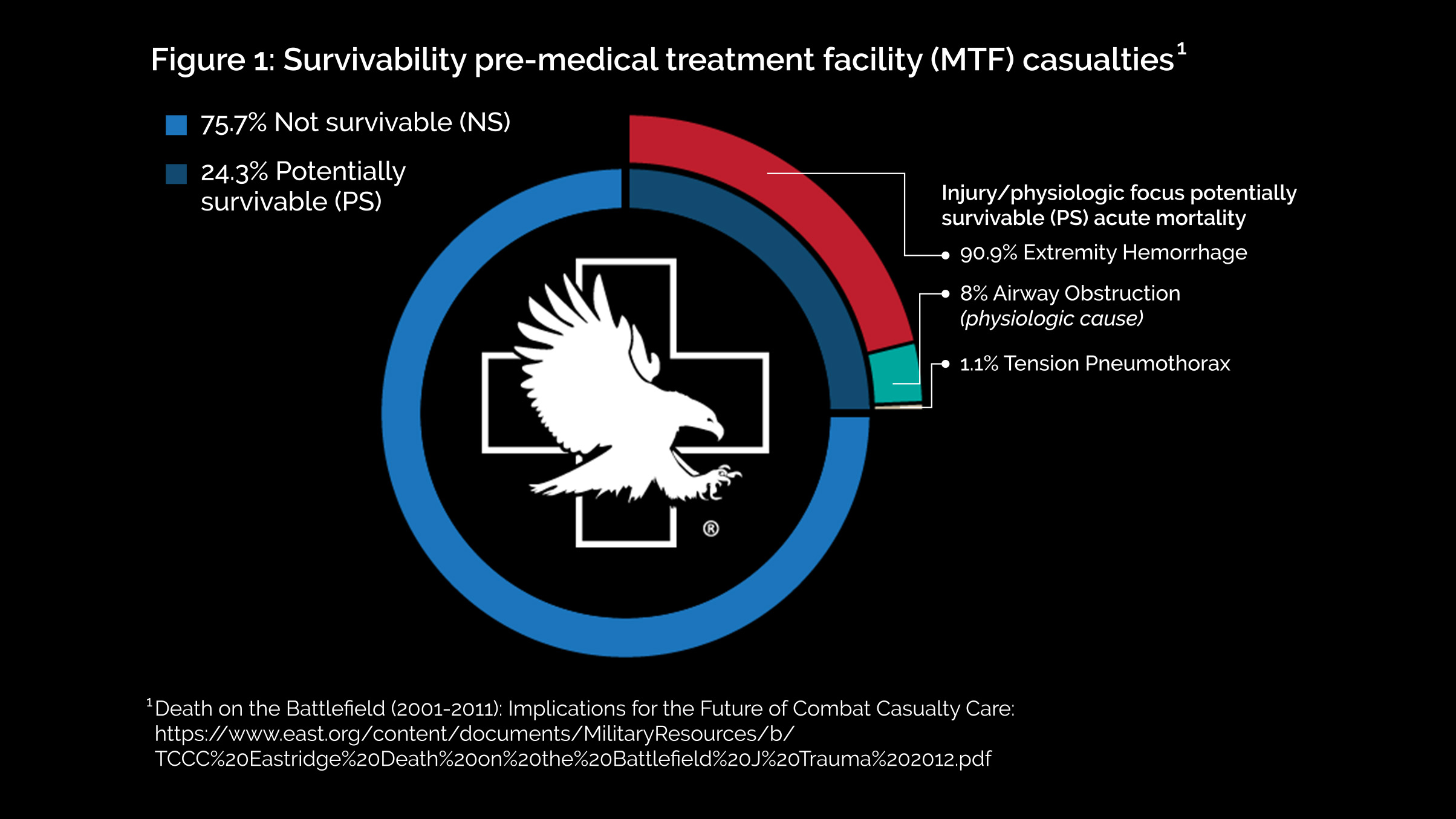
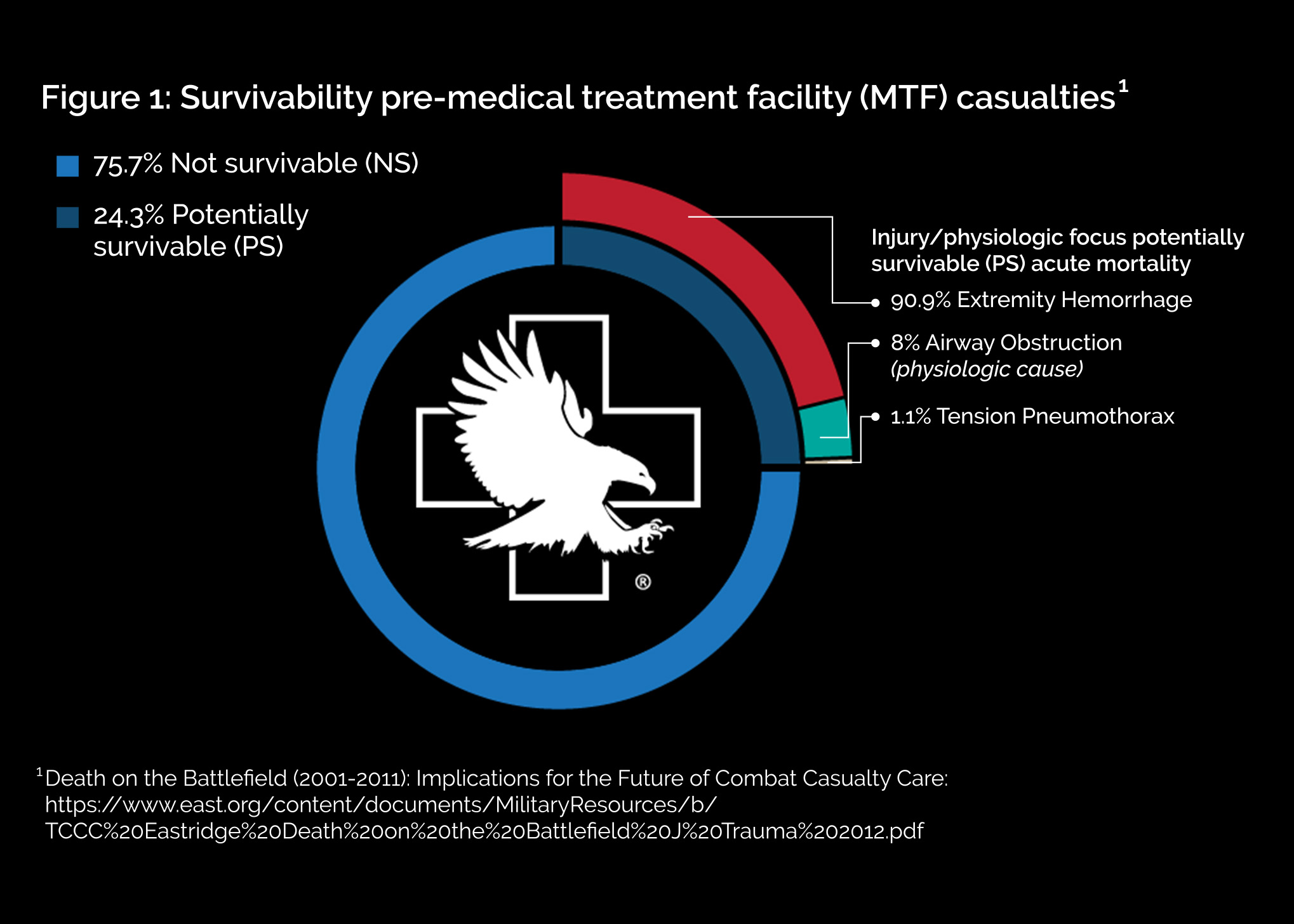
The hemorrhage that takes place when a main artery is divided is usually so rapid and so copious that the wounded man dies before help can reach him.
— Col. H.M. Gray, 1919
A TIERED SYSTEM FOR MEDICAL EQUIPMENT
During all phases of care the principle mandate of TCCC is the critical execution of the right interventions at the right time. Particularly in the tactical environment, good medicine administered at the wrong time can often prove to be lethal. With this in mind Tactical Healthcare Professionals as well as Individual Warfighters/ Operators will both likely be involved in casualty care at some level and must be trained in and armed with the appropriate medical equipment and procedures corresponding to each level of care.
As illustrated in Figure 2, our macro strategy equips each tier with the critical equipment essential to managing trauma at each phase of casualty care. When employed with Tactical Combat Casualty Care (TCCC) training standards, this tiered approach can decrease Preventable Combat Death by as much as 90+%.
